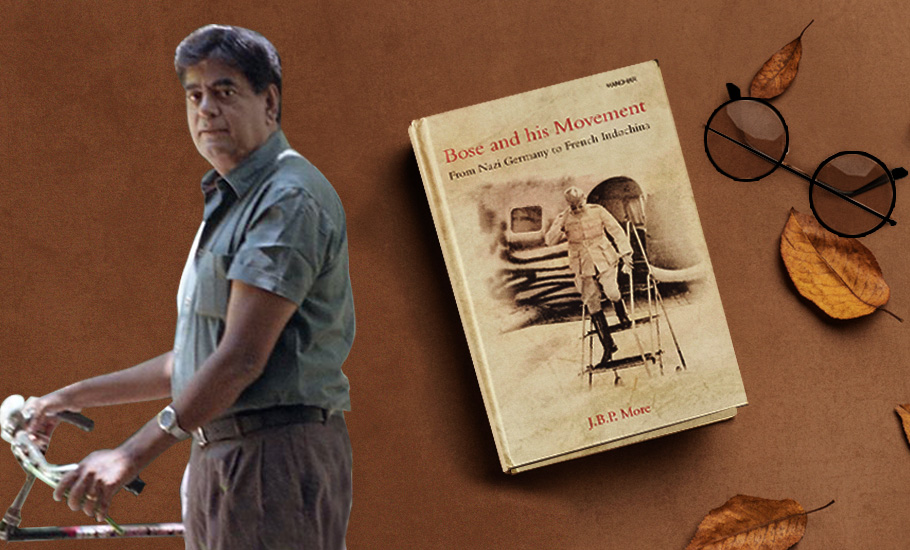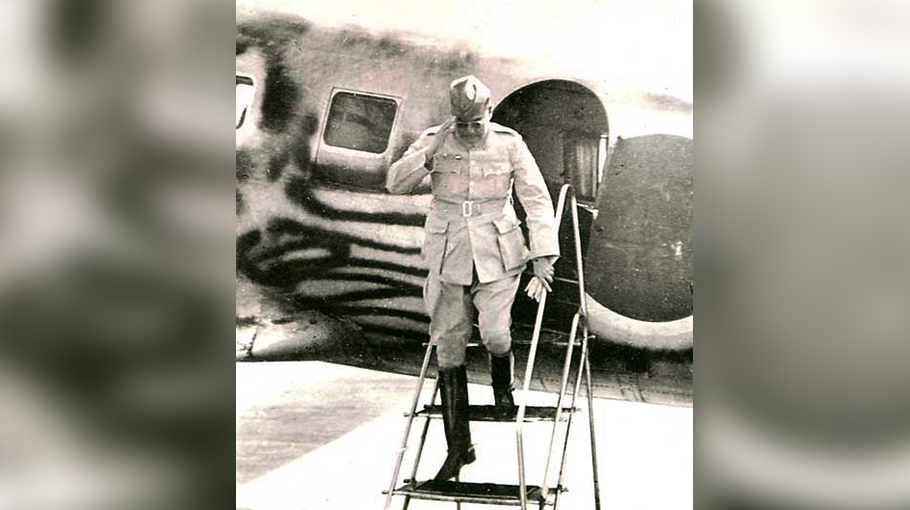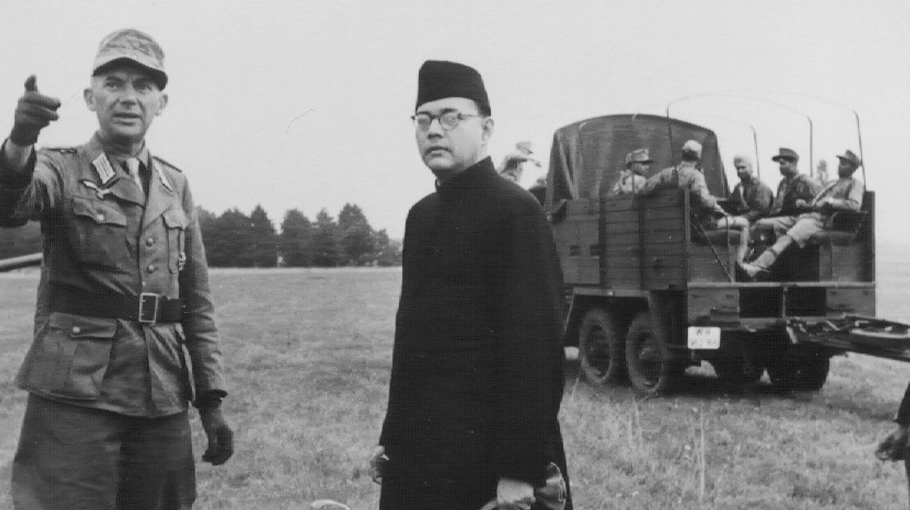
- Home
- News
- Analysis
- States
- Perspective
- Videos
- Education
- Entertainment
- Elections
- Sports
- Features
- Health
- Budget 2024-25
- Business
- Series
- Bishnoi's Men
- NEET TANGLE
- Economy Series
- Earth Day
- Kashmir’s Frozen Turbulence
- India@75
- The legend of Ramjanmabhoomi
- Liberalisation@30
- How to tame a dragon
- Celebrating biodiversity
- Farm Matters
- 50 days of solitude
- Bringing Migrants Home
- Budget 2020
- Jharkhand Votes
- The Federal Investigates
- The Federal Impact
- Vanishing Sand
- Gandhi @ 150
- Andhra Today
- Field report
- Operation Gulmarg
- Pandemic @1 Mn in India
- The Federal Year-End
- The Zero Year
- Premium
- Science
- Brand studio
- Newsletter
- Home
- NewsNews
- Analysis
- StatesStates
- PerspectivePerspective
- VideosVideos
- Entertainment
- ElectionsElections
- Sports
- Features
- BusinessBusiness
- Premium
- Loading...
Premium - India-Canada ties

How a historian found new facts in Bose’s mystery death

Leon Prouchandy, of Pondicherry and Saigon, was a wealthy man. Prouchandy was, in fact, so rich he donated handsomely to Subhash Chandra Bose’s Indian National Army (INA) and the Indian Independence League (IIL). Prouchandy even gave a part of his Saigon mansion to serve as IIL’s Secretariat. As a result of his support to the Indian freedom struggle, Prouchandy was tortured so savagely...
Leon Prouchandy, of Pondicherry and Saigon, was a wealthy man. Prouchandy was, in fact, so rich he donated handsomely to Subhash Chandra Bose’s Indian National Army (INA) and the Indian Independence League (IIL). Prouchandy even gave a part of his Saigon mansion to serve as IIL’s Secretariat. As a result of his support to the Indian freedom struggle, Prouchandy was tortured so savagely by French intelligence in the 1890s that he was left in a vegetative state. His family suffered emotionally and financially. The family’s fortunes declined both in Vietnam and Pondicherry. Prouchandy’s contribution to the Indian Freedom movement still finds little mention among freedom fighters.
The family remained determined to bring to light Prouchandy’s contributions are acknowledged and he is accorded his due place in history.
Decades later, his grandson and Paris-based historian JBP More, while sifting through documents in search for answers to what Prouchandy underwent during the freedom struggle, came across facts that made him see Subhas Chandra Bose’s disappearance in a new light rejecting both the air crash theory in which Bose was believed to have died and the Russian escape theory, which says Bose fled to Russia and ultimately died there.
So, what happened to Subhas Chandra Bose?
JBP More in his book titled Bose And His Movement: From Nazi Germany to French Indochina, says that Bose never left Saigon or Indochina after August 17, 1945, where he might have died under mysterious circumstances, before the 1946 arrival of the Cabinet Mission in India.
In September 1945, in a letter written by General Douglas Gracey, commandant of the operations in Saigon, to the supreme commander of the Allied forces, Lord Mountbatten, it is mentioned that three top personalities of the Indian Independence League (IIL) were arrested in Saigon by the Allied troops. “I have shown in one of the French secret service records that Bose was a member of the Japanese liaison office Hikari Kikan. Bose was one of those arrested,” says JBP More, whose grandfather, Leon Prouchandy, was arrested too. “He (Prouchandy) was beaten out of his senses and left after three months in an amnesic state. My family members and I stand witness to this event. But Bose never reappeared. I suspect he was done away with in some way before the Cabinet Mission came to India in March 1946,” he says.

JBP More’s arguments hold water as they are based on records that he found in France, England, Vietnam and India. According to him, the Taiwanese government had not come out with any official statement that the air crash really happened on the basis of tangible evidence. Besides, both the Indian and the Japanese governments do not want to subject the ashes in the Tokyo temple to DNA test to establish the truth about Bose’s death in an air crash.
“A theory was floated that Bose died in an air crash or that he escaped to Russia. But there is no material evidence for it. The ashes in the Tokyo temple are in the custody of the Japanese government. I challenge the Japanese government to conduct a DNA test of Bose’s ashes in Tokyo to find out the truth. They won’t do that as those ashes were fictitious,” says JBP More, former professor of economic history at the Institut des Hautes Etudes Economiques et Commerciales, Paris.
Subhash Chandra Bose’s journey
Bose, fondly called Netaji, was born on 23 January, 1897, in Cuttack. He studied in Presidency and Scottish Church Colleges in Calcutta. Bose did not believe in Gandhi’s pacifism, despite being the president of the Congress party during 1938-39. In 1941, he fled to Germany and launched the Indian Legion and Free India Centre in Berlin in alliance with Nazi Germany. He met Adolf Hitler in May 1942. Bose fled to Japan in February 1943 in a German submarine with Abid Hasan and revived the IIL and INA with Japanese help to free India from the British in 1943. Unfortunately, Bose disappeared on August 18, 1945.

JBP More believes that publishing report after report on Bose’s death based on testimonies and not on factual evidence and behaving as if the matter is settled as is the case with some scholars and writers like Sugata Bose, Christopher Bayly, Leonard Gordon and Ashis Ray can in no way settle the matter. “There is no factual evidence to establish that Bose left Indochina or Saigon in August 1945,” says JBP More, based on two French Secret Service documents.
It was after a prolonged research that JBP More discovered the documents in the French Overseas Archives at Aix en Provence. It is stated in the document that Bose’s then whereabouts were unknown and that he had fled Indochina or was an ‘escapee of Indochina’. “The words in the document are quite ambiguous. It seems to suggest on one hand that Bose was held at some point of time after August 18, 1945, by the French or the Allied Forces and kept in custody in Saigon, before he escaped. On the other hand, the words could also mean that he escaped from Indochina without being caught. There were two prisons in Saigon in 1945 which were the Bot Catinat Prison and the Saigon Central Prison, which was not far from Bot Catinat, where Bose could have been held,” he told The Federal.
The secret document, however, asserted categorically that Bose escaped, though we do not know for sure if he had really escaped from Saigon itself and was re-arrested later. “This record established nevertheless that the French knew or were in a position to know more than anyone else the whereabouts of Bose. But instead of endorsing the air crash theory, it was declared categorically in the document that Bose’s whereabouts were unknown. This implies that the French secret file did not also endorse the Russian or Chinese escape theories either,” More writes.
“This is quite intriguing because Bose had nowhere else to go apart from Russia and China. If he had gone to Japan, he would have been arrested, as Japan had surrendered to the Allied Forces. So the statement that Bose had escaped from Indochina and that his whereabouts were unknown seems to suggest that Bose could also be holed up in Saigon or Indochina, as there was nowhere else to go.”
There is one more document that JBP More discovered in the Defence Archives in Paris. Later, he found the same in English in the British National Archives in London. This was in the form of a letter from the Saigon Control Commission (SCM) to the Supreme Commander of Allied forces in Southeast Asia. JBP More says this document, on September 21, 1945, emanating from the SCM clearly stated that seven Indians, of which three were top IIL personalities and members of the Hikari Kikan, were detained for interrogation. “Of the three top IIL personalities arrested on 21 September or rather a few days before that, we have only one indication. They were members of the Hikari Kiran. Despite my patient search in London, France and India, I could not find any Indian being a member of the Hikari Kiran other than Bose himself,” says JBP More. Notable leader AC Chatterji had escaped into the countryside.
So who were the other top IIL personalities who were also members of the Hikari Kiran, assuming that the third one was Bose himself? “The answer to this question must be known to Douglas Gracey and Lord Mountbatten,” he says.
The Allied forces had also confiscated valuable stores and bonds or precious merchandise belonging to the NIA and IIL from the secretariat of the IIL at 76 Rue Paul Blanchy. JBP More says there are strong indications that this precious merchandise could only be the war treasure that Bose carried with him. “They have not been traced till today. I have checked the archives both in London and France but there is no reference to this treasure any more in any of the records,” says JBP More, who has authored 24 books, including Pondicherry, Tamil Nadu and South India under French Rule: From Francois Martin to Dupleix (1674-1754).
Chance discovery
More says the discovery of the documents related to Bose happened while he was working on documenting facts about his grandfather’s struggles as a freedom fighter on the insistence of his mother.
“I lived with my grandfather until he passed away when I was about 12 years old in our villa in Pondicherry. I had to take up this matter because my mother had told me to bring what happened to Prouchandy to the attention of the Indian government,” he says. But it was after he became a historian in France that More decided to crack the mystery of Prouchandy. “This led me to Bose because in the course of my research I was convinced that in order to find out what happened to Prouchandy and why it happened, I have to find out what happened to Bose. I think I have found it,” he says.

However, More has a slight disappointment. “The French Counter-espionage record on Bose and his men in Saigon in 1945 was refused to me point blank by the Defence Archives in France on the pretext that it was closed for 100 years due to defence and security reasons. More light will be shed on these aspects if the archival authorities in France agree to disclose the contents of that long file on Bose and the Freedom movement in 1945, held by the Defence Archives in Paris,” he says.
(Bose and his Movement: From Nazi Germany to French Indochina has been published by Manohar Publishers and Distributors, New Delhi.)
(The author is a senior Kerala-based journalist.)

